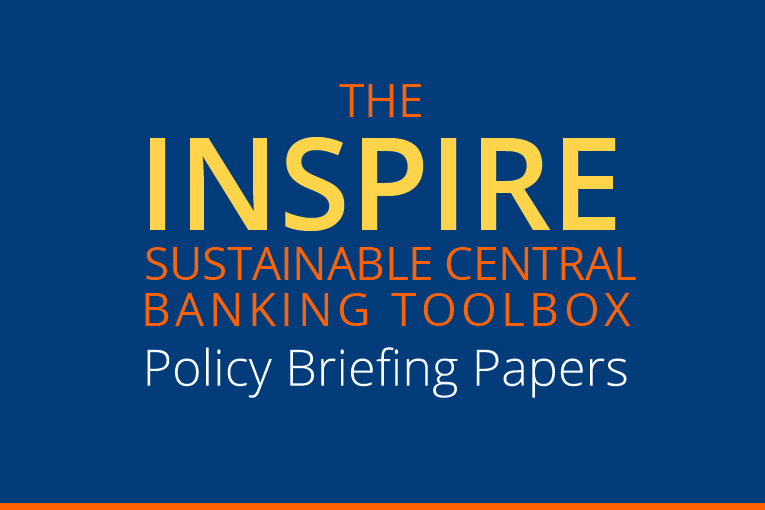Prudential transition plans: the great enabler for effective supervision and regulation of climate-related financial risks?

Download
INSPIRE Sustainable Central Banking Toolbox – Policy Briefing No.15
Prudential transition plans can be used in financial supervision and macroprudential monitoring to overcome some of the challenges inherent to assessing the climate-related financial risks that stem from the transition to a low-carbon economy. These challenges include the poor availability and consistency of data, modelling constraints, and the long time horizon over which risks may materialise.
This paper explores how transition plans could offer a technical solution to the challenge of integrating transition risks into the prudential framework. It considers how the design of transition plans can be tailored to integrate risks into several areas of supervision and macroprudential policy, such as the large exposures framework, stress testing, risk management and disclosure.
Key messages
- Climate-related financial risks have a unique set of characteristics that limit the capacity of conventional risk approaches to adequately capture and measure them. To date, central banks and financial supervisors have developed supervisory expectations and climate transition scenarios. However, firms are currently failing to meet these expectations.
- One approach to overcome the limitations of microprudential supervision is for regulated institutions to implement prudential transition plans. Transition plans are multi-year accounts to show how business models and strategies are consistent with environmental objectives. Prudential transition plans specifically focus on financial institutions’ risk management strategies to ensure they mitigate the possible transition risks and bring these risks within a time horizon that supervisors can take into account.
- There is much still to be agreed in the design of prudential transition plans, such as their scope (whether broad, narrow or differentiated) and their assessment (e.g. an alignment-based approach that uses decarbonisation targets or a more granular assessment that reflects the drivers of risk).
- This paper suggests a four-component design to integrate prudential transition plans into the prudential regime:
- A detailed assessment of large exposures: Identify and assess exposures to climate-related financial risk across different sectors, using the Climate Policy Relevant Sectors (CPRS) system which classifies economic risk categories.
- Scenario analysis: Stress-test financial portfolios against climate scenarios to determine risk exposure.
- Risk management: Assess firms’ risk management practices and climate-related data collection practices.
- Transparency and disclosure: Develop minimum disclosure requirements and provide an overview of current and future climate risk position through a dashboard.
- The implementation of prudential transition plans alone will not resolve the current challenges to the incorporation of climate-related risks within the prudential regime. However, prudential transition plans would offer supervisory oversight over longer time horizons than conventional financial reporting, and a more granular assessment to understand risk differentials within sectors.
- The implementation of prudential transition plans needs to be undertaken in conjunction with other policies to adequately reflect environmental risks in the prudential framework.
This paper is part of the INSPIRE Sustainable Central Banking Toolbox, which is designed to support central bankers and financial supervisors in calibrating monetary, prudential and other instruments in accordance with sustainability goals as they address the ramifications of climate change and other environmental challenges. The papers have been written and peer-reviewed by leading experts from academia, think tanks and central banks and are based on cutting-edge research, drawing from best practice in central banking and supervision.

